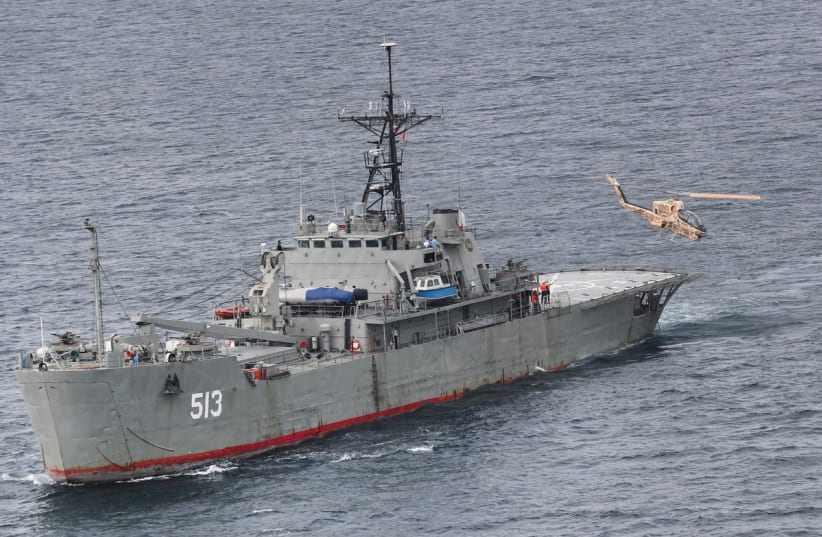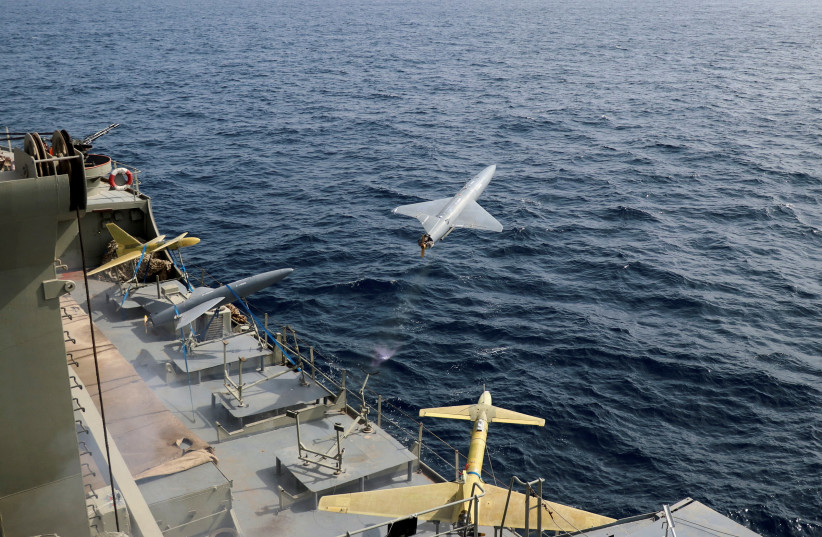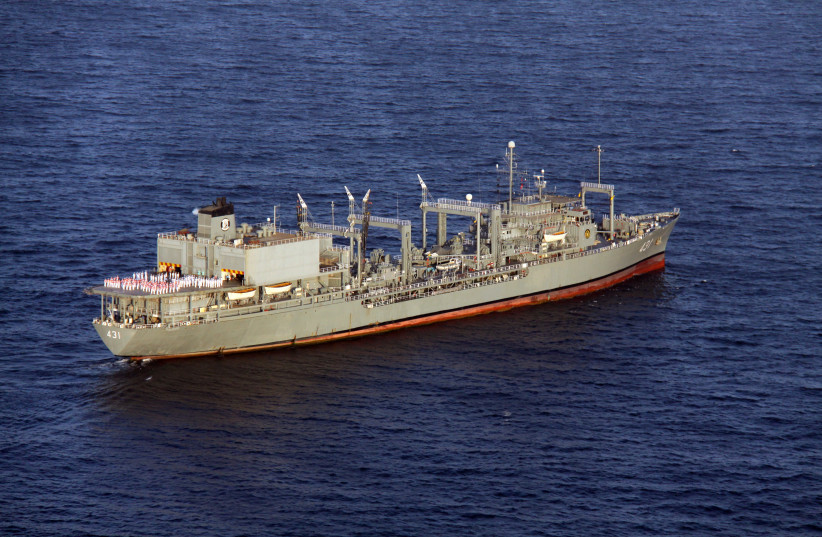On February 10 an “airborne object” struck a ship that was transiting the Indian Ocean, around 300 nautical miles off the coasts of India and Oman. The details of the incident were only revealed a week later, on February 17. BBC reporter Nafiseh Kohnavard tweeted on Friday that Iranian drones targeted the Campo Square commercial ship. “A US mil official confirms,” she wrote, noting that another military source in the region said, “the attack was carried out by Iran itself.”
Jared Szuba wrote on Al-Monitor that “at least one Iranian drone targeted an Israeli-linked commercial shipping tanker in the Arabian Sea on February 10, causing minor damage, a US military official familiar with the incident confirmed to Al-Monitor on Friday.” He noted that “the official said the United States believes Iran was behind the attack due to the drone’s point of origin and tracking data, but did not specify where the device was launched from or what type of drone was used. BBC Persian first reported the incident on Friday.”
Further reports noted that the vessel, which didn’t have cargo, was on the way from Singapore to Fujairah in the UAE. The vessel and crew were safe after the attack and there was only minor damage.
The attack follows the November 15 attack on the Pacific Zircon which was carried out by a drone launched from Chabahar. Images of the drone attack in November were later published by CNN. “The charred remains of the drone show the numbers 229 on the side… American and Israeli officials pointed the finger of blame at Iran – identifying the drone as a HESA Shahed 136 similar to the Iranian-made self-detonating drones used by Russia in Ukraine,” CNN noted. That followed the even more serious attack in July 2021 against the Mercer Street tanker off the coast of Oman in which British and Romanian crewmen were killed.
An emerging pattern of attacks
The attacks in this area are part of a pattern. In the spring of 2021 there were other incidents, including targeting the ships Helios Ray in February, the Hyperion Ray in April and the Lori. There was also an incident aboard the CSAV Tyndall in early July 2021. And those incidents come after the mining attack on four ships off Fujairah in May 2019 and the attack on two ships in June 2019 that were transiting near the coast of Iran.
THE RECENT incident does not seem to have made many waves. Last week reports did say the UK had transferred evidence to the UN of weapons smuggling to the Houthis in Yemen. The HMS Montrose had stopped the ship last year, so it wasn’t a recent incident. However, there were some other incidents in the region around the time Iran targeted the ship. A drone attack was reported on Isfahan in early January. In addition, Iranian proxies targeted US forces in Tanf in Syria on January 20 and sent a drone over US forces last week in eastern Syria.
The attack on the ship also came before Iran’s president went to China where he discussed regional issues with the Chinese. The attack raises questions though, why Iran would carry out an attack and then not mention it. Regional media close to Iran has been quiet on this issue. In fact, Iran doesn’t seem to think it is particularly interesting. Iran sometimes brags about attacks, such as targeting US forces in Iraq, or even Palestinian terror attacks on Israel. But Iran is relatively quiet about its use of drones to target ships hundreds of miles off the coast of Oman.
Are these new attacks significant?
This leads to questions. If Iran carries out attacks and no one reports them, and no one is harmed, are the attacks important and do they matter? Iran has been harassing ships for years in this region off the coast of the UAE. The attacks began back in 2019 during tensions between the US and Iran.
They have also increased with Israel-Iran tensions. Iran appears to have graduated from using mines to strike ships close to Iran and the UAE, to using drones to strike hundreds of miles off the coast. This is a good way for Iran to test its drone capabilities. As long as the drones don’t harm the ships or crew, it seems it doesn’t raise a lot of concerns.
However, one might wonder what is the point of using drones to target ships if there isn’t much damage. It could be a trial run for further Iranian drone escalation. Iran has been shipping drones to Russia. Iran may be testing their targeting capabilities and abilities to bring back real-time information and target moving objects, such as ships at sea. Iran is also apparently using drones to strike further away.
Iran marks its target
COMMERCIAL SHIPS are an easy target because they don’t usually have any defensive capabilities. Also, the multiple layers of ownership and other details make it complex to hold a country accountable because the ships themselves are involved in a network of ownership companies and are usually flagged in countries like Liberia. Liberia isn’t going to hold Iran accountable probably. On the other hand, the drone attacks are far enough away that the ships are unlikely to have any protection from naval task forces in the region, such as the US Fifth Fleet or other ships involved in security in the region.
The Iranian attack occurs on the eve of the important IDEX and NAVDEX defense exhibitions in the UAE. These exhibitions will include the unveiling of products that can defend against drones at sea. However, these kinds of expensive products are not usually used on commercial ships. There are thousands of ships off the coast of Oman transiting this important route. Many of them use AIS transponders so they can be tracked easily at sea. These transponders help the ships avoid collisions.
Nefarious countries like Iran that want to target shipping can use this to the benefit of the attackers. In the past, piracy used to be a major issue off the coast of Somalia but now the Iran drone threat is also one of many issues with which ships have to contend.
The US navy task force operating from Bahrain has been working to deploy more unmanned surface vessels in recent years. This is important because USVs can help in detection and other operations over this large area of water that extends from strategic waterways such as the Suez Canal and Straits of Hormuz and Bab el-Mandeb.
However, USVs are not usually armed with counter-drone or counter-UAS systems, meaning they can’t stop drone attacks either. This leaves a wide open area, a kind of soft underbelly, for Iran to target and test its drones. As the world becomes more familiar with the Iran drone threat it will be interesting to see if anything is done regarding these incidents. The fact that the incident on February 10 went unreported for a week appears to show it is not a top priority.



